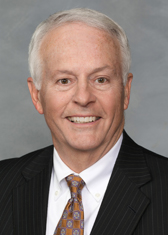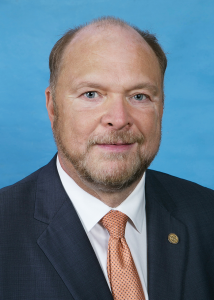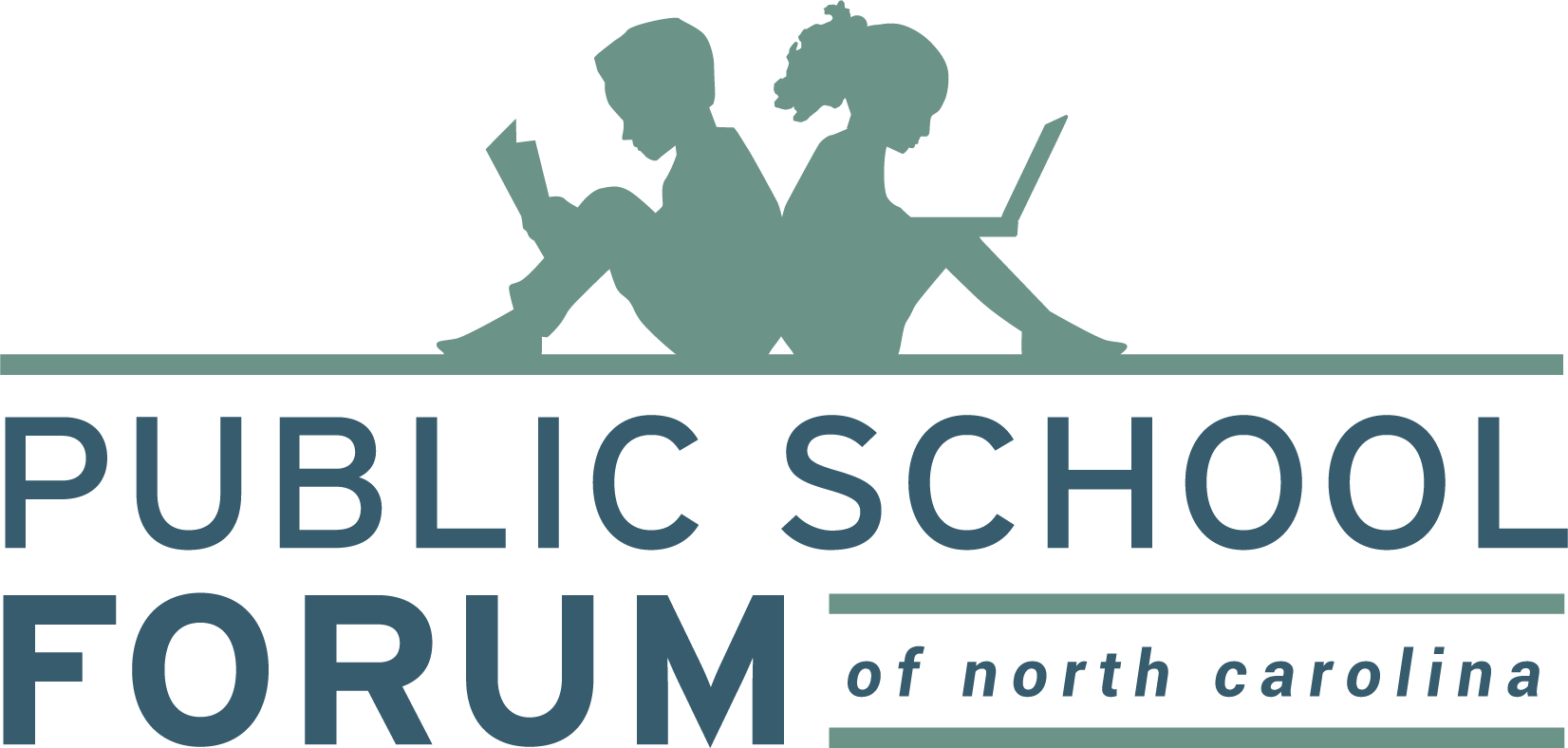By Lindsay Wagner
It’s been a year and a half since a legislative committee heard testimony from education and business stakeholders about innovative ways to bring North Carolina principal pay up from its abysmal rank of 50th in the nation.
Since then, the General Assembly has enacted a new compensation model for public school principals that its proponents say is a huge improvement, offering substantial increases in pay that began last fall.
However, several experienced principals, superintendents and lawmakers say the new plan results in steep losses in pay for many veteran principals – a concern that’s been addressed with a hold harmless provision that prevented drops in pay this year, but is set to expire before the start of the next academic year.
And some say that the plan’s heavy reliance on schools’ academic growth scores is a disincentive for talented leaders to take on the daunting task of turning around chronically low-performing schools—a consequence that runs counter to the recommendations from advocates that pitched ideas to lawmakers back in 2016.

“You don’t take a principal who has been successful with students in one school, ask him or her to go to a lower performing, troubled school with the idea of turning it around, and then say ‘and by the way, if you agree to take this on, you could end up taking a pay cut if you don’t make it work in a time frame that we would like to have it work in,’” said Rep. Hugh Blackwell (R-Burke), a former member of the Burke County school board and a member of the House education committee in an interview with the Public School Forum.
Rep. Blackwell, who voted for the new plan that was inserted into the state’s budget bill last year, says he’d like to see some key changes made to how principals are now paid during the upcoming legislative session. Those changes include extending the hold harmless provision and making tweaks to other aspects of the plan that go to the heart of its philosophy on how to pay principals—but he’s not optimistic those changes will come.
“I think we should do something, but my efforts to persuade others have thus far fallen on deaf ears,” said Blackwell. Alluding to past impasses between the House and Senate when it comes to education budgets, Blackwell said, “the House and the Senate have to both agree on some things.”
50th in the nation
What the House and Senate have been able to agree on so far is that principal pay in North Carolina had sunk to an incredible low by 2016. North Carolina ranked 50th out the states and Washington, D.C. for its school-based administrator pay, which included principals.
On top of that, the state had been utilizing a principal salary schedule that had become out of step with its teacher salary schedule. In some instances, teachers could earn as much or more than their principals, providing very little incentive for an educator to pursue a career in school leadership. Some school districts tried to make up for that with local salary supplements, particularly wealthier urban ones.
It wasn’t until the fall of 2016 that a legislative committee began to get serious about making critical changes to how North Carolina pays its principals. Testimony from a variety of education and business stakeholders offered innovative ways to pay school leaders.
Several of the presentations underscored the need to incentivize the best talent to head to low-performing schools. The result came in the form of a new principal plan enacted by lawmakers during the 2017 legislative session and went into effect for this current school year.
While the plan boosts base pay for principals, it pivots away from paying them on the basis of years of experience, number of teachers under their supervision and the attainment of advanced degrees. Instead, it shifts to a performance incentive model that rewards or punishes principals based on how their schools’ academic growth scores change over time.
Former vice chair of the State Board of Education Buddy Collins is encouraged by the legislature’s actions around principal pay, but he is concerned about the potential harm to veteran principals along with a few other philosophical approaches to compensation that necessitate a serious course correction.
“Veteran principals are valuable assets to school systems,” said Collins. “We’re making a big mistake as a system to take well trained, veteran principals and force their retirement.”
“I want [the legislature] to fix this,” Collins said.
Veteran principals in the crosshairs
Valley Springs Middle School Principal Eddie Burchfiel has been in education for 31 years. Now, he’s considering an early retirement—a move directly tied to an anticipated drop in pay for the next school year—nearly $3,000 annually.
“I am at a great school and I enjoy my job,” said Burchfiel. “But if I stay, it’s a real risk financially when it comes to my retirement benefit.”
Some veteran principals could see even more significant drops in pay—in some cases by as much as $20,000 or more—as a result of the new plan. That’s not necessarily because the schools’ student growth performance has been poor, but because the base salary range for principals has been shrunk to make room for a bigger share of pay to be reliant on student growth scores.
At the same time, the old pay system’s supplements to reward longevity and advanced degrees were eliminated. The combination of it all has made it impossible to maintain the salaries of those at the very top of pay schedules.

Lawmakers enacted a hold harmless provision to prevent these steep drops in pay for the first year of the pay plan—but it is set to expire at the end of this academic year. Beginning with the 2018-19 school year, those pay losses will become a reality unless the legislature acts.
Collins, who just stepped down this month from his role as vice chair of the State Board of Education, said he cannot understand why lawmakers would not want to extend the hold harmless provision.
“You could assume that perhaps there’s a desire to force out highly paid, low-performing principals—but all principals are employed on contracts, so districts can already force a retirement or let that person go if they need to,” said Collins. “So it’s strange to take highly qualified principals and force them into retirement before they want to go.”
Collins said that in his home district of Winston-Salem/Forsyth Schools, where he served on the local school board for years, there are three principals that are all highly performing and extremely valuable to the district. One principal leads one of the best technical high schools in nation, one leads an international baccalaureate program in a high-risk neighborhood, and the third is an accomplished trainer of principals at a middle school.
But with the new plan, all three would see substantial cuts in pay and be forced to consider quitting to avoid being hit with cuts to their retirement benefits.
“Yes, they’re past retirement age, but they want to keep working,” said Collins. “Veteran, successful principals know how to recruit, retain and train their staffs—something that is extremely valuable.”
Deterring top talent from turning around low-performing schools

Carrie Tulbert has been a principal for eight years, three of which she’s spent at Concord Middle School in Cabarrus County.
Tulbert, a North Carolina Teaching Fellow, was named North Carolina Principal of the Year in 2014. She was recruited to help turnaround Concord Middle a few years ago, at a time when the school was really struggling with low test scores and high teacher turnover.
At the time, Tulbert didn’t have to worry about a pay plan that could result in big fluctuations in salary as worked to transform the school into a high flyer.
With the new pay plan, there’s a lot more at risk for those turning around low-performing schools. If two out of the last three years didn’t result in increased academic growth scores, principals can see their pay cut – obviously a huge disincentive for skilled leaders, like Tulbert, to take on the monumental feat of turning around a low-performing school.
“It’s very possible I could see a decrease in pay next year,” said Tulbert, who will be going into her fourth year at Concord Middle. Married to a teacher, she’s the primary breadwinner in her family, and a dip in pay will have a big impact.
It took at least three years to see some improvement at her last school, Tulbert said. Educators generally agree that it takes a minimum of 3-5 years to turn things around at low-performing schools. And schools with a long history of struggling are typically plagued by high teacher and student turnover. It’s very challenging to recruit and retain top teaching talent, and it takes time to do that.
It’s a consequence that the North Carolina Principals and Assistant Principals Association (NCPAPA) is deeply worried about. “So if you’re at a school that you’ve done well with, then asked to go take on another school and do the same thing, you’re probably looking at lean years when it comes to pay,” said Shirley Prince, executive director of NCPAPA.
NCPAPA and the North Carolina School Boards Association (NCSBA) both plan to fight for changes to the principal pay plan during this upcoming legislative session.
“If the goal of the plan, especially with regard to the bonuses and to some degree the salary schedule, is to entice successful principals to take on the challenges of leading low-performing schools, we believe that that needs to be rethought,” said Leanne Winner, governmental relations director for the NCSBA. “This current structure for principal pay does not encourage that and may actually be a significant discouragement.”
Test scores in exchange for experience and education
A pay plan for principals that moves away from rewarding years of experience and advanced degrees to a model that rewards student outcomes is something that BEST NC, a coalition of business leaders engaged in education advocacy, supports.
“There is not a strong correlation between years of experience and student growth,” said Brenda Berg, President and CEO of BEST NC, who lobbied for many of the key elements of the new principal pay plan—particularly rewarding advances in student performance.
“I agree there are highly experienced principals that are highly effective, but what made them great could have been a great mentor, innate leadership talent, or perhaps a PhD—but none of that matters to me,” said Berg. “What matters to me is that students and teachers do better with that leader.”
Berg says that the best way we have to measure that kind of success is by using a measure of academic school growth that’s known as an EVAAS score, which was developed by Cary-based SAS, Inc. Berg says it’s what principals tell her is the fairest measure we have.
Former State Board of Education vice chair Collins disagrees.

“I would never evaluate a principal solely based on an EVAAS score. That’s the central flaw,” said Collins said of the new plan. “If you step away from doing that, you come to realize that there are many other things on which you have to evaluate a principal — their ability to handle discipline, craft a solid budget, effectively handle public relations, create a culture of trust and respect, manage issues related to the needs of exceptional children, tackle very challenging school safety topics, the list goes on,” said Collins, who added that an EVAAS score doesn’t adequately capture those elements.
“If you want a highly performing principal to go to a low-performing school knowing that it will take about a five-year window to achieve success, and you’re going to be judged on two out of the last three years, then that superintendent will have to sweeten the pot with local money to stabilize pay while the principal does that hard work,” said Collins. “And that creates an equity issue among high wealth and low wealth districts, because the poorer ones won’t be able to do that easily.”
Providing incentives for highly performing principals to move to low-performing schools is an area that BEST NC’s Berg says needs improvement.
Moving forward
When lawmakers meet in May, the number one thing that will be up for consideration when it comes to principal pay will be extending the hold harmless provision. If not, there are very strong indications that veteran principals will retire en masse come the start of the new school year.
Rep. Blackwell says that he’s seen estimates that as many as 356 principals could see pay cuts beginning July 1—roughly 15 percent of the workforce. He says extending the hold harmless provision is critical along with eliminating disincentives for turning around struggling schools and adding more funds to the base salaries for principals, because what’s there is only a start.
State Board of Education Chairman Bill Cobey is urging lawmakers to extend the hold harmless provision. In a letter to the General Assembly last October, Cobey said:
“In a time when the talent pipeline for teachers and school administrators cannot keep up with the demand, and when some of our highly talented principals stand to lose an average of over $8,000 in pay, we respectfully request that you extend the “hold harmless” provision for all principals through fiscal year 2018-19,” wrote Cobey.
State Superintendent Mark Johnson, someone who has frequently been at odds with members of the State Board of Education, agrees with Cobey on the matter of extending the hold harmless provision.
“After conversations with lawmakers and principals, I am supportive of an extension of the hold-harmless provision to give school systems and principals more time to adjust to this new pay scale.
But Rep. Blackwell is not optimistic at this point that the House and Senate will find common ground on this matter. And neither is Buddy Collins.
“I’m discouraged by what I perceive is the unwillingness to look at the problems with this plan and work harder to get a solution,” said Collins.
###

I am one of the veteran principals who stands to lose a significant portion of my salary with this plan. If I only had to worry about test scores, I wouldn’t necessarily have a disagreement with this plan. However, there are so many other factors that play into what I do on a daily basis that really have nothing to do with student achievement or growth. They have to do with running a school where those things can happen. The days of the principal being the “instructional leader” are quickly fading. Instead, I spend most of my time with administrivia–parent concerns, budgets and resources, facilities, and the like. EVAAS is a great tool, but the folks at SAS will tell you it should only be considered as one data point. Principal salaries should reflect this fact as well.